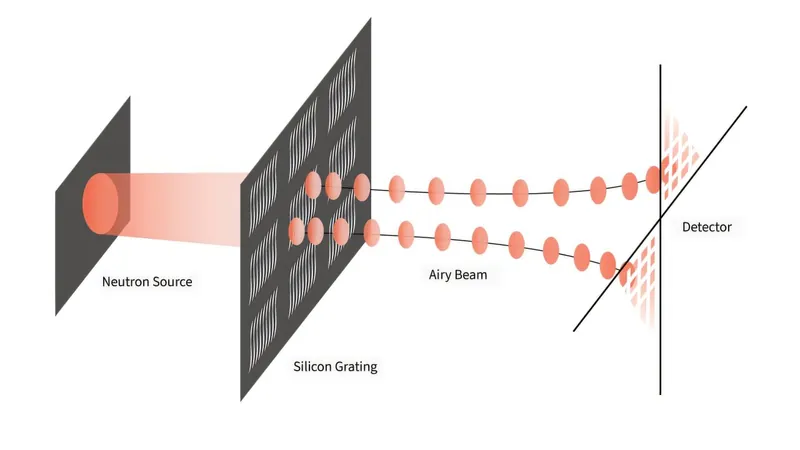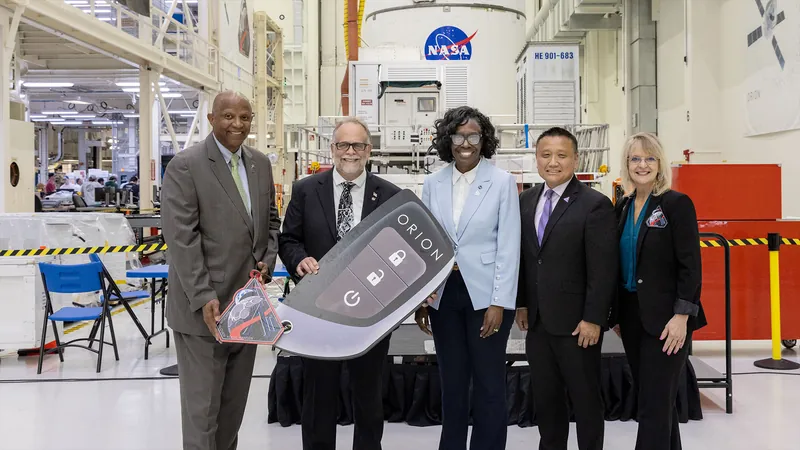
Revolutionizing Industry: Scientists Harness Curved Neutron Beams
2025-04-17
Author: Sophie
A Breakthrough in Physics
In an unprecedented advance, researchers from the National Institute of Standards and Technology (NIST) and their collaborators have engineered a method to curve neutron beams, introducing what they call "Airy beams." Named after the renowned English scientist George Airy, these unique beams have the potential to unlock new insights into materials ranging from pharmaceuticals to perfumes.
The Magic of Self-Sustaining Waves
"We've understood these self-steering wave patterns for some time, but creating them with neutrons is a first," stated Michael Huber from NIST. This innovative control over neutron beams opens a gateway to a deeper understanding of materials and challenging questions in physics. The team's findings are detailed in the latest issue of Physical Review Letters.
The Team Behind the Innovation
The project, spearheaded by Dusan Sarenac from the University of Buffalo, also included experts from the University of Maryland, Oak Ridge National Laboratory, and several research institutions across Switzerland and Germany. Their collaboration was crucial in developing the specialized equipment needed to generate these Airy beams.
Amazing Properties of Airy Beams
Unlike standard beams that disperse over distance, Airy beams maintain their intensity as they travel and exhibit an extraordinary capability of "self-healing"—if an obstacle obstructs their path, they can reconstruct their original form. This characteristic could revolutionize imaging techniques.
Innovative Technology at Work
Constructing Airy beams with neutrons is challenging since traditional lenses cannot bend them due to their neutral charge. The team devised a novel solution: a diffraction grating—a finely-etched silicon array that can transform regular neutron beams into Airy beams.
Potential Impacts on Neutron Imaging
These advancements in neutron imaging could enhance resolution significantly, allowing for precise analyses of objects through techniques like neutron diffraction and scattering. "We believe the fusion of neutron Airy beams with other types could unlock even greater capabilities," Huber explained.
Exploring Chirality through Neutron Technology
One exciting possibility is merging neutron Airy beams with helical neutron waves, leveraging insights into chirality—where molecules exhibit 'handedness' that affects their chemical behavior. With a chiral market exceeding $200 billion annually, advancements in this area could revolutionize pharmaceuticals and materials science.
The Future of Quantum Computing and Spintronics
Chirality is increasingly vital in quantum computing and modern electronics like spintronics, where electron spin influences data storage and processing. Huber noted, "By mastering chirality, we can better manipulate qubits, the foundational elements of quantum tech. Neutron Airy beams could dramatically enhance our ability to study these advanced materials."









 Brasil (PT)
Brasil (PT)
 Canada (EN)
Canada (EN)
 Chile (ES)
Chile (ES)
 Česko (CS)
Česko (CS)
 대한민국 (KO)
대한민국 (KO)
 España (ES)
España (ES)
 France (FR)
France (FR)
 Hong Kong (EN)
Hong Kong (EN)
 Italia (IT)
Italia (IT)
 日本 (JA)
日本 (JA)
 Magyarország (HU)
Magyarország (HU)
 Norge (NO)
Norge (NO)
 Polska (PL)
Polska (PL)
 Schweiz (DE)
Schweiz (DE)
 Singapore (EN)
Singapore (EN)
 Sverige (SV)
Sverige (SV)
 Suomi (FI)
Suomi (FI)
 Türkiye (TR)
Türkiye (TR)
 الإمارات العربية المتحدة (AR)
الإمارات العربية المتحدة (AR)